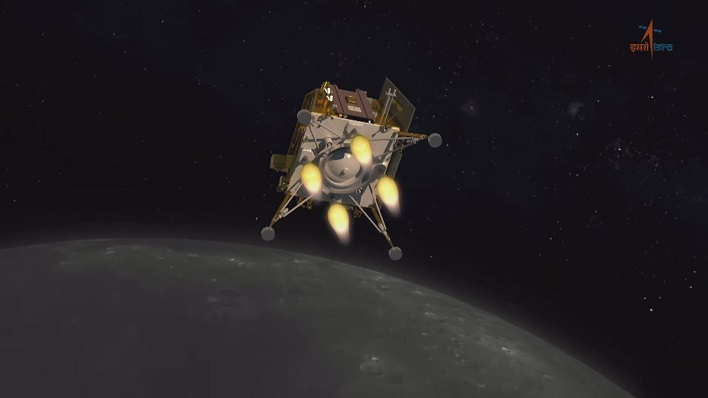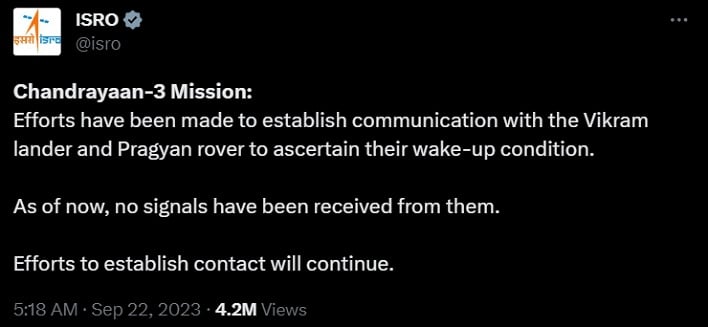India’s Chandrayaan-3 Lunar Lander Fails To Respond To ISRO Wake-Up Call

Chandrayaan-3 launched on July 14, 2023, from the Satish Dhawan Space Centre in Sriharikota, India. The mission comprises a lunar lander, a propulsion module, and a rover. On August 23, 2023, India became only the fourth country in the world to successfully land on the lunar surface, following the United States, Russia, and China. However, ISRO has reported that it has been unable to establish communication with the Vikram lander and Pragyan rover during a wake-up call on September 22, 2023.
ISRO tweeted that no signals have been received from Vikram and Pragyan, but efforts were still underway to try and reestablish communication with them.
In an interview, former ISRO Chairman K Sivan remarked, "The design life of Vikram lander and Pragyan rover is practically over as they have completed all their mission tasks during the 14 Earth days. However, ISRO is trying to establish contact with the lander and rover after the Sun rises there on the Moon. They (scientists) will keep trying it."
Sivan also pointed out that there is plenty of "precious data" to analyze from the mission. He says scientists will find new science as they continue sifting through what the two have already sent back. He cited an example from the Chandrayaan-1 mission, where scientists from a US university found that high-energy electrons in Earth's plasma sheet contributed to weathering processes on the Moon's surface.
ISRO has indicated that establishing contact with the lander and rover is "automatic." Only once the lander answers the call can ISRO do anything more. A source speaking with The Times of India remarked that the difficulty in establishing contact with the lander and rover could be a "connectivity problem in circuits." Another possibility is that the harsh night conditions on the Moon took its toll on the batteries of the lander and rover, and that they simply need a recharge via the solar panels on them.


